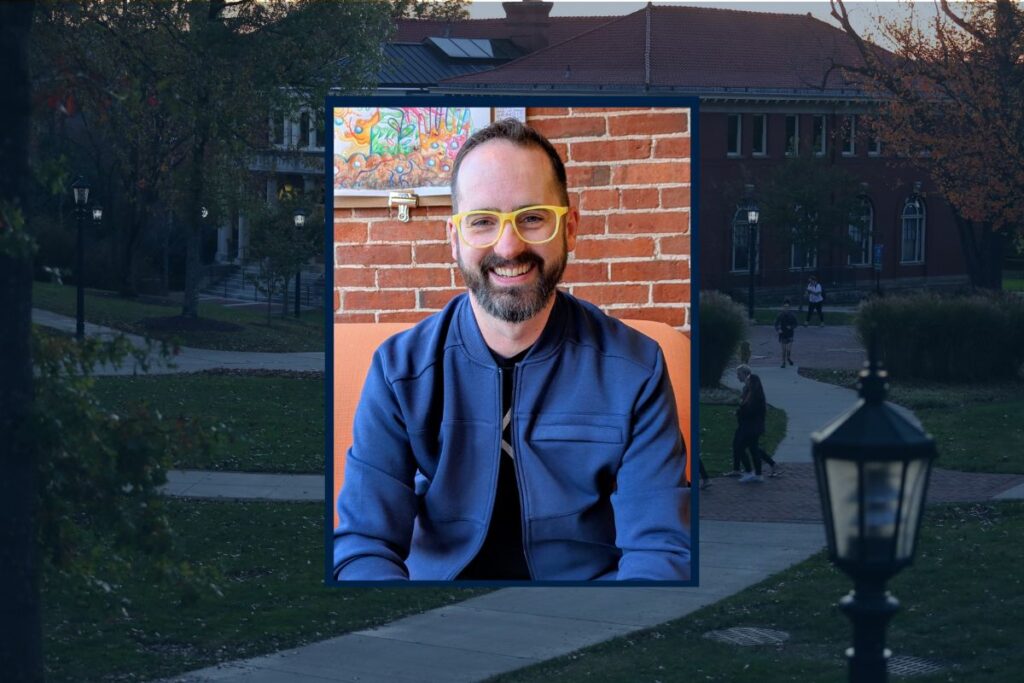
When Jude Shingle ’08 steps into a room, he isn’t looking for the spotlight, he’s looking for possibility. That mindset, shaped in classrooms and community projects during his Allegheny College days, has carried him through a career of creating spaces where people can learn, experiment, and grow.
Now, as the newly appointed executive director of the Erie Center for Arts and Technology (ECAT), Shingle is bringing that vision to a place where creativity and opportunity meet.
Shingle grew up in Mt. Lebanon, just outside Pittsburgh, and arrived at Allegheny with an eye for art and a curiosity about the bigger picture. He majored in studio art and minored in American studies, but more than anything, he absorbed the liberal arts ethos.
Allegheny taught me to write and think critically, and those muscles have carried me through everything I’ve done since,” he says. “I instinctively look at problems from different angles, valuing nuance and complexity, and that came from an education that didn’t settle for easy answers.
It wasn’t just theory. Through ACCEL (now the Center for Career and Professional Development) and mentors like now-retired Professor Dave Roncolato, Shingle pursued service-learning projects that forced him to connect coursework to real-world issues. “That made my learning feel alive in a way I really needed at the time,” he recalls. “It showed me how ideas could turn into something useful for people.”
That connection between creativity and service became his theme. After Allegheny, Shingle taught arts education at the Erie Art Museum, founded Box of Light (a creative nonprofit for children) with his wife Annie Schmitt ’08, and later launched a makerspace for adults at the Erie County Public Library. Each stop was about the same thing: building environments where people gained confidence by making something new.
So when ECAT asked him in 2021 to develop its teen arts program, Shingle didn’t hesitate. The program was a blank canvas, and he and his team designed what he describes as “the kind of after-school program we always wished had existed, open, flexible, centered on what teens cared about, and led by professional artists who treated them as peers.” The results were immediate: teenagers filled the studios, experimented across art forms, and discovered their voices in the process.
Now, as executive director, Shingle is seeing the bigger picture. ECAT is based on the nationally known Manchester Bidwell model, pioneered by Bill Strickland in Pittsburgh, which combines workforce training for adults with arts programming for teens. “Teens are exploring their creativity while their parents train for life-changing careers,” Shingle explains. “That multi-generational impact is what keeps me motivated.”
For someone who never pictured himself in an executive role, the promotion has been grounding. “Leadership feels less like climbing a ladder and more like answering a call,” he says. “My approach is servant leadership: listening first, empowering people to do their best work, and keeping the focus on those we serve.”
The focus is paying off. In May 2025, ECAT celebrated 35 adult graduates of its workforce training program, most of whom are already employed. Seventy-five teens filled the art studios after school last semester. And because ECAT is located in a historically disinvested Erie neighborhood, Shingle knows the ripple effects go far beyond job placement or gallery shows. “We’re bringing art, light, and careers to a place that has often been overlooked. When you do that, you give people hope, and hope has a way of growing beyond what you can predict.”
For Shingle, the most rewarding moments are personal. In the spring of 2025, eight of ECAT’s teen arts students graduated from high school, students he had known since their first year in high school, some even longer from his earlier teaching days.
“They told us this was a place where they could be themselves and feel supported, and that meant everything,” he says. Parents hugged him and thanked him for being there for their children. “I don’t have kids of my own, but in that moment, it hit me how much this work is about building the spaces we wished we had when we were younger. That’s the most affirming feeling in the world.”


